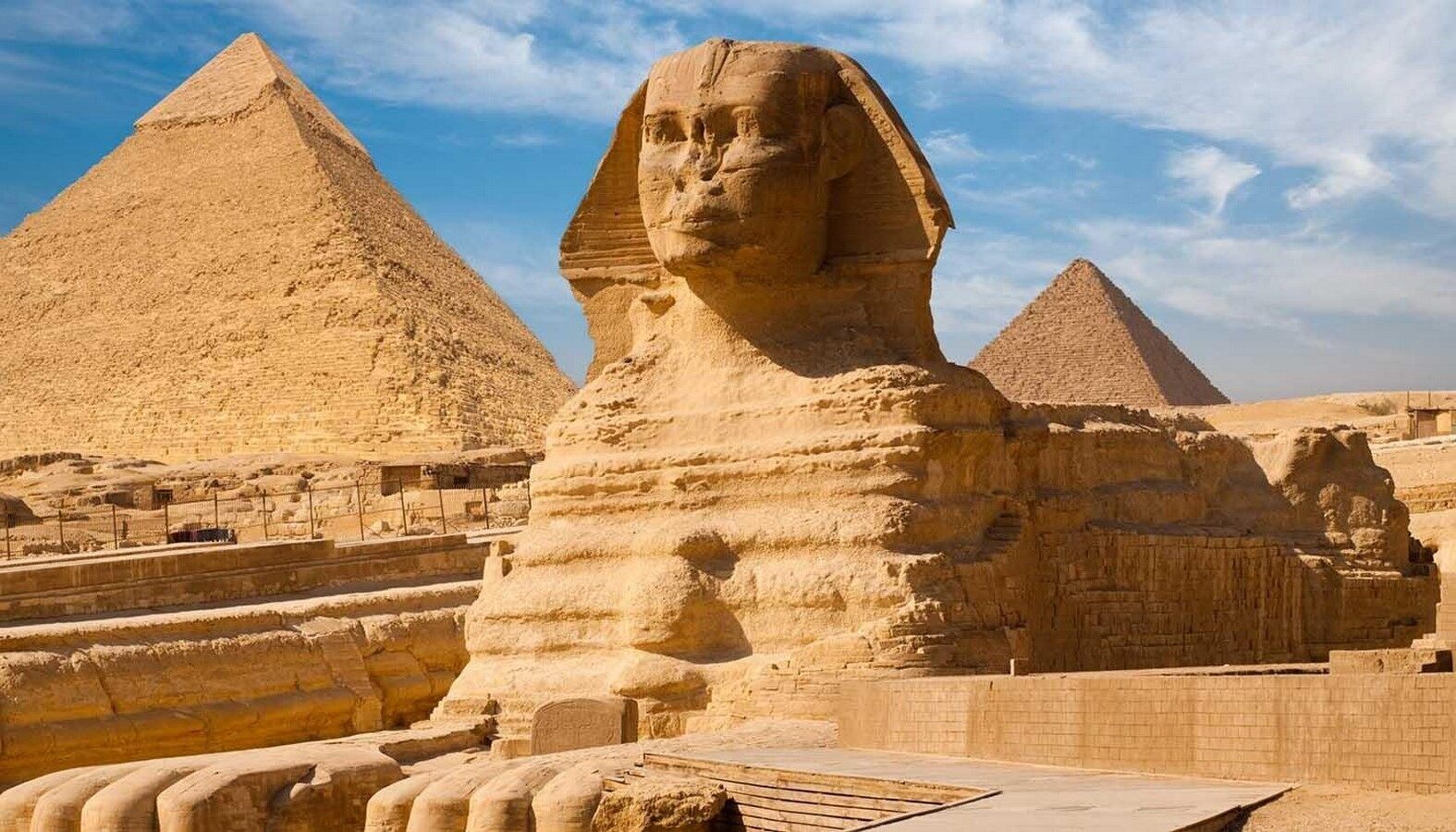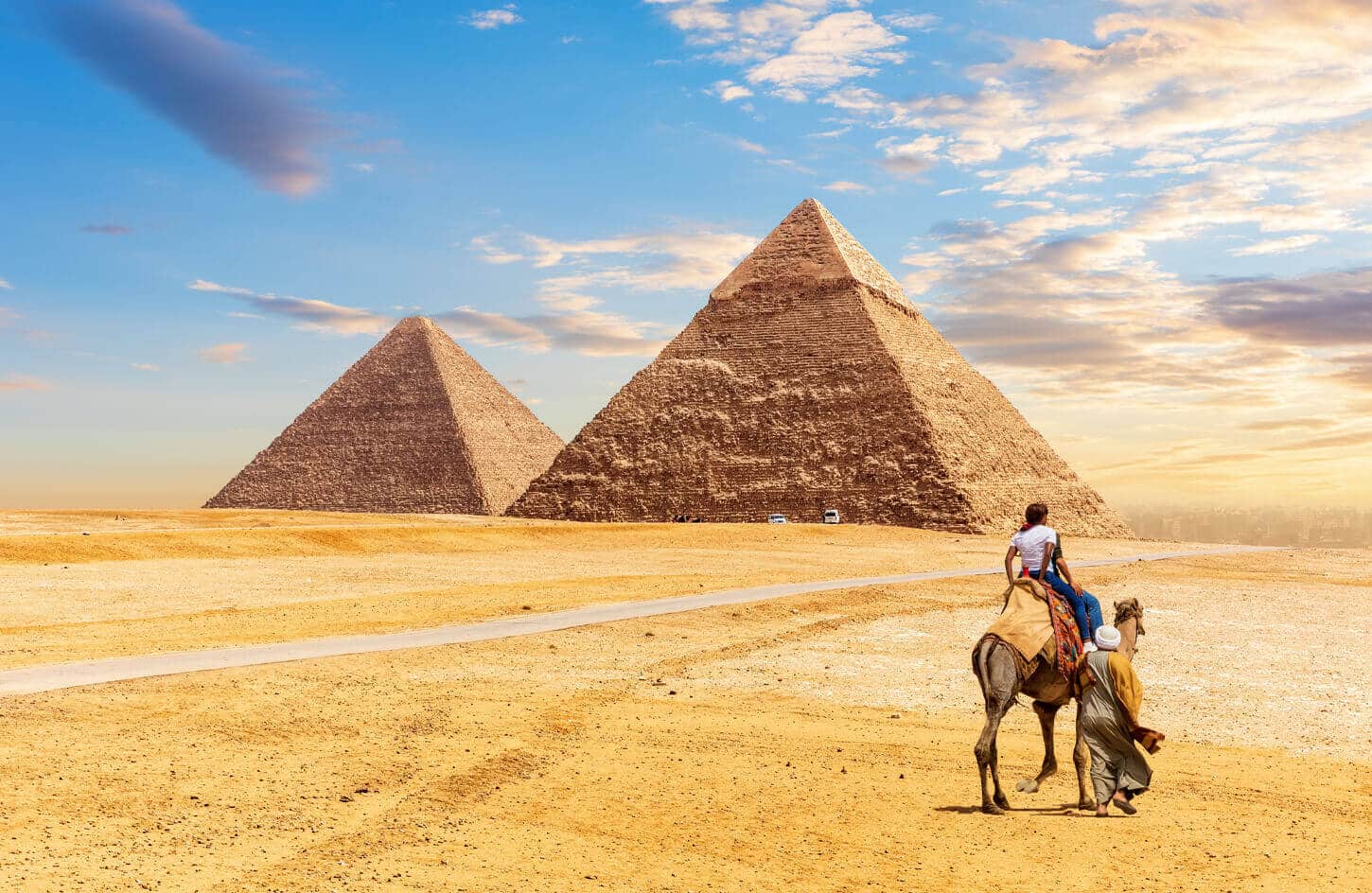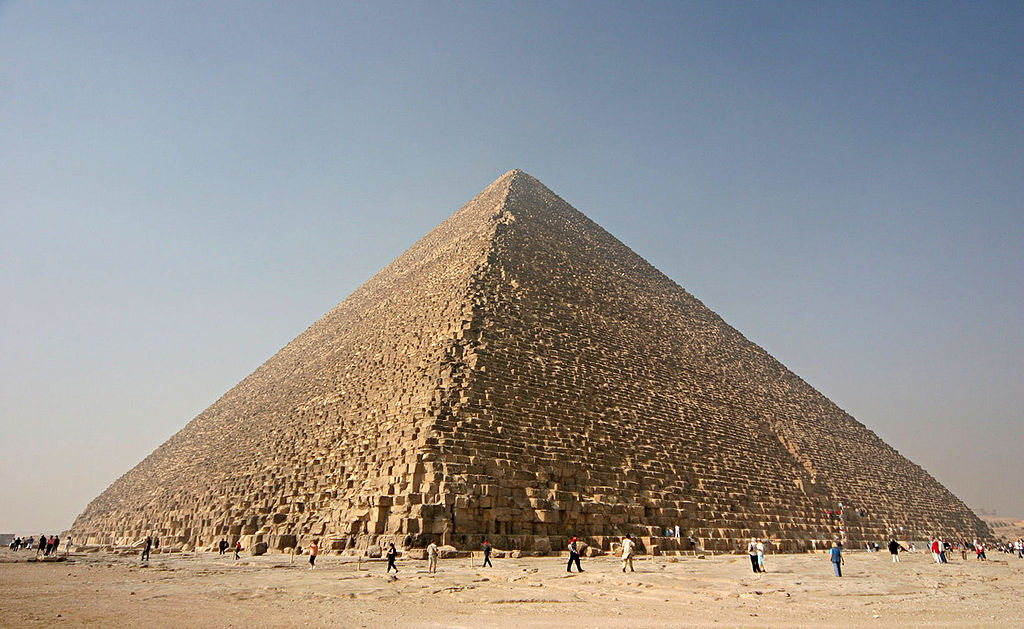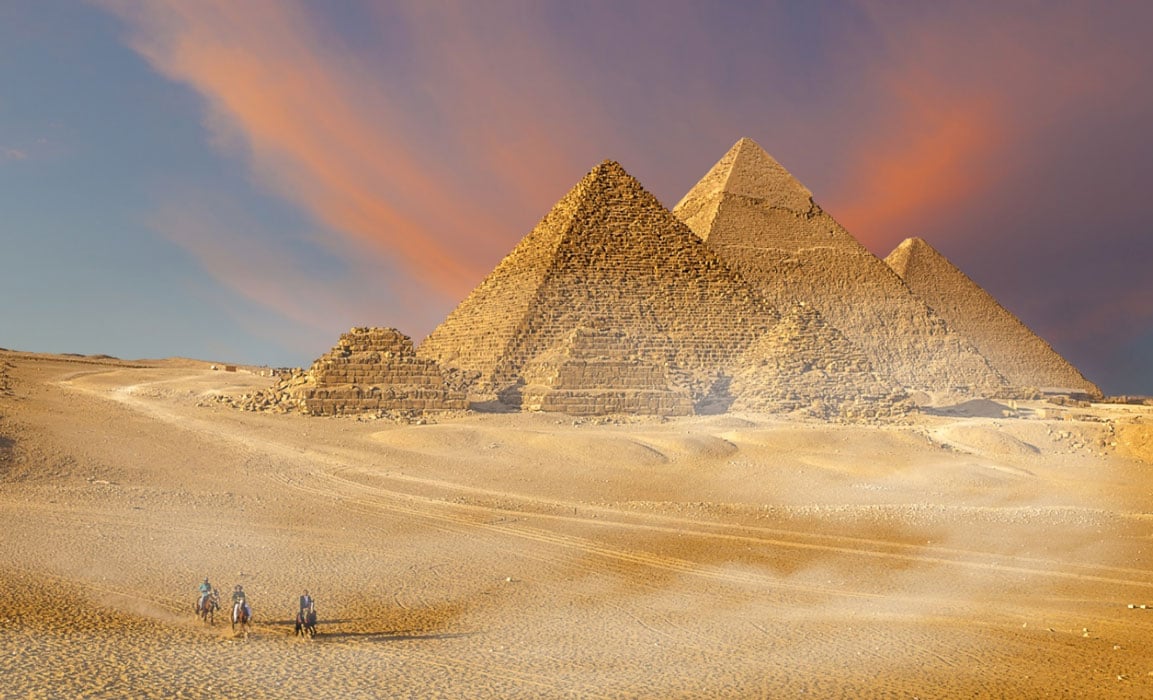
Introduction
Definition of Pyramids
Pyramids are monumental structures characterized by their towering triangular shapes, often built as tombs for royalty or sacred spaces. Their distinct geometric design has captured the imagination of people worldwide.
- Key Features :
- Four triangular sides
- Square base
- Typically made of stone or brick
Significance of Pyramids in History
Pyramids hold immense significance in the annals of history, showcasing the architectural ingenuity of ancient civilizations.
- Cultural Symbols : Represent the power and beliefs of societies, particularly in Ancient Egypt.
- Tourist Attractions : Sites like the Great Pyramid of Giza continue to draw millions, facilitating cultural exchange and education.
Their enduring legacy invites curiosity, encouraging further exploration of their mysteries and purpose.

Ancient Egyptian Pyramids
Overview of Egyptian Pyramids
The ancient Egyptian pyramids, primarily built during the Old and Middle Kingdoms, are emblematic of one of humanity’s greatest architectural feats. These structures served as grand tombs for pharaohs, ensuring their journey to the afterlife.
- Iconic Examples :
- Great Pyramid of Giza
- Pyramid of Khafre
- Pyramid of Djoser
Each pyramid reflects not only religious beliefs but also the artistic and engineering prowess of the Egyptians.
Construction Techniques of Ancient Egyptian Pyramids
Constructing these monumental structures was no small feat. The ancient Egyptians employed various ingenious techniques, blending manpower, tools, and a profound understanding of engineering.
- Key Techniques :
- Quarrying Stone : Massive limestone and granite blocks were quarried from nearby sources.
- Transportation : Logs and sledges helped in moving these heavy stones across the desert.
- Ramp Systems : Inclined ramps were likely used to raise blocks to higher levels, allowing workers to construct the pyramids with precision.
It’s fascinating to think of the hundreds of workers who labored, driven by a singular purpose that transcended their own lives, leaving a legacy that continues to awe us today.

Global Pyramids
Pyramids Around the World
While the Egyptian pyramids are the most famous, pyramidal structures are found across the globe, each reflecting unique cultural contexts and purposes.
- Noteworthy Examples :
- Mesoamerica : The Pyramid of the Sun in Teotihuacan and the Pyramid of Kukulcán in Chichen Itza showcase the impressive engineering of ancient civilizations.
- Sudan : The Nubian pyramids at Meroë were smaller but equally significant, with unique architectural styles.
These structures not only functioned as burial sites but also served religious and ceremonial purposes.
Comparison of Different Pyramid Styles
When comparing pyramids worldwide, one can observe distinct architectural variations influenced by cultural values, materials, and construction techniques.
- Key Differences :
- Shape and Structure :
- Egyptian pyramids often have smooth sides and a precise geometric design.
- Mesoamerican pyramids typically feature stepped bases and wide platforms at the summit.
- Purpose :
- Egyptian pyramids primarily served as royal tombs.
- Pyramids in Mesoamerica played vital roles in religious rituals and ceremonies.
- Shape and Structure :
Reflecting on these differences reveals how pyramids, regardless of their location, symbolize the aspirations and beliefs of the civilizations that created them. Each structure serves as a testament to human creativity and the quest for immortality.

Theories and Mysteries
Purpose of Pyramids
The purpose of pyramids has sparked curiosity for centuries, leading to various interpretations. Originally viewed as monumental tombs for pharaohs, their roles may extend beyond mere burial sites.
- Potential Functions :
- Tombs : Primary function for the burial of royalty and elite individuals.
- Religious Centers : Sites of worship and offerings to deities.
- Astronomical Observatories : Aligning with celestial bodies for religious practices.
These diverse interpretations highlight the multifaceted significance of pyramids in ancient cultures.
Historical and Archaeological Theories
Researchers delve into historical and archaeological theories to uncover the mysteries surrounding pyramids. Many debates revolve around their construction methods and societal implications.
- Key Theories :
- The Pharaoh’s Divine Connection : Some scholars argue that pyramids symbolize the connection between the pharaoh and the gods, reinforcing their divine rule.
- Labor and Organization : Archaeological findings suggest that a well-organized workforce, likely comprising skilled laborers and seasonal workers, was essential for pyramid construction.
Personal stories from archaeologists, revealing their emotional connection to these ancient structures, further enrich our understanding of their enduring importance and the untold stories they hold. The exploration of these theories continues, keeping the allure of pyramids alive in our collective consciousness.

Modern Discoveries
Recent Findings About Pyramids
As archeological techniques evolve, our understanding of pyramids continues to deepen, unveiling remarkable discoveries. Recent findings have shed light on their construction and cultural contexts, leaving historians and enthusiasts alike in awe.
- Notable Discoveries :
- Hidden Chambers : Advanced scanning technology has revealed previously unknown voids within the Great Pyramid of Giza, sparking excitement about what they may contain.
- Burial Practices : Excavations at various pyramid sites have uncovered burial artifacts and inscriptions, providing insights into the rituals and customs of ancient Egyptians.
Each discovery adds a new layer to the rich tapestry of pyramid history, inviting further exploration and interpretation.
Technological Advancements in Pyramid Research
Technological advancements are revolutionizing the way researchers study pyramids, enabling them to discover hidden secrets without invasive methods.
- Innovative Techniques :
- Ground Penetrating Radar (GPR) : This non-destructive technology allows scientists to scan beneath the surface, detecting voids and anomalies without excavation.
- 3D Scanning : Creating detailed digital models, researchers can analyze the pyramids’ structural integrity and visualize changes over time.
Personal encounters with these groundbreaking technologies offer an exciting glimpse into the future of archaeology. The ongoing fusion of technology and history not only preserves the past but also inspires new generations to unlock the mysteries of these magnificent structures.

Pyramid Complexes
Components of Pyramid Complexes
Pyramid complexes are not merely isolated structures; they are intricate sites comprising several interrelated components that reflect the beliefs and practices of ancient civilizations. Each element serves a specific purpose, contributing to the overall significance of the complex.
- Key Components :
- The Pyramid : The central structure, often the burial site for the ruler.
- Mortuary Temples : Adjacent temples for rituals honoring the deceased and facilitating offerings.
- Causeways : Long pathways connecting the pyramid to the valley temple, used for processions and ceremonies.
- Surrounding Tombs : Smaller tombs for nobles and family members, emphasizing their relationship with the pharaoh.
Understanding these components enhances appreciation for the craftsmanship and planning that went into these remarkable sites.
Functionality and Layout
The layout of pyramid complexes reflects meticulous design and functionality, playing a crucial role in rituals associated with death and the afterlife.
- Smart Design Elements :
- Orientation : Most pyramids align with cardinal points, symbolizing a connection to the cosmos and the divine.
- Access and Flow : The arrangement of components allowed for seamless movement during ceremonial activities, reinforcing the social hierarchy.
- Symbolic Pathways : The design often included symbolic elements representing the journey of the soul to the afterlife.
Personal visits to these awe-inspiring sites reveal a palpable sense of history embedded in their architecture. Walking through these complexes, one can almost hear the whispers of ancient rituals, emphasizing the complexity and thoughtfulness behind their design.

Symbolism and Iconography
Religious and Cultural Significance
The symbolism embedded in pyramid complexes reveals a deep cultural and religious significance that extends far beyond their physical presence. Each pyramidal structure serves as a testament to the ancient Egyptians’ beliefs about life, death, and the afterlife.
- Key Symbolic Elements :
- Solar Imagery : Pyramids are often associated with the sun god Ra, representing connection to the divine and the cycle of life.
- Ascending to Heaven : The pyramid’s shape, pointing towards the sky, symbolizes the pharaoh’s journey to the afterlife and their ascension to the realm of gods.
- Eternity and Immortality : Pyramids served as a means for pharaohs to achieve eternal life, reflecting profound beliefs in resurrection and the afterlife.
These elements invite deep reflection on the values and aspirations of a civilization that sought to transcend mortality.
Hieroglyphs and Inscriptions on Pyramids
Hieroglyphs and inscriptions found on and within pyramids are not simply decorative flourishes; they offer invaluable insights into ancient texts and beliefs. These inscriptions serve as a form of communication, connecting the living with the divine.
- Inscriptions :
- Funerary Texts : Such as the Pyramid Texts, which provide spells and prayers intended to guide the deceased through the afterlife.
- Historical Records : Many hieroglyphs document the achievements of the pharaohs and their divine lineage.
On a personal note, encountering these inscriptions can be quite emotional. Each symbol tells a story, providing a glimpse into the thoughts and experiences of individuals who lived thousands of years ago. This connection to the past enriches our understanding of their worldview and the importance of preserving these cultural treasures.

Conservation Efforts
Challenges in Preserving Pyramids
The preservation of pyramids is fraught with challenges, as these monumental structures face numerous threats ranging from natural erosion to human intervention.
- Key Challenges :
- Environmental Factors : Weathering, sandstorms, and temperature fluctuations can erode stones and weaken foundations.
- Tourism Pressure : High foot traffic from millions of visitors can accelerate wear on delicate surfaces.
- Urban Encroachment : Modern development poses risks, with construction often threatening nearby archaeological sites.
These challenges underscore the delicate balance between preserving history and accommodating contemporary society.
Conservation Techniques and Initiatives
Amid these challenges, various conservation techniques and initiatives have emerged to safeguard these invaluable monuments.
- Innovative Practices :
- Stabilization Techniques : Lightweight materials and methods to prevent collapsing structures are used to bolster vulnerable areas.
- Environmental Monitoring : Advanced technology keeps track of environmental changes affecting the pyramids, allowing for timely interventions.
- Community Engagement : Initiatives that involve local communities in conservation efforts cultivate a sense of ownership and responsibility.
Personally, witnessing efforts by teams of dedicated conservationists to combat the deterioration of these ancient wonders is inspiring. Their passion and commitment highlight the global importance of preserving cultural heritage for future generations. Each initiative represents hope, affirming that while the pyramids may face challenges, the spirit of preservation remains resolute.

Pyramids in Pop Culture
Influence on Art, Literature, and Film
Pyramids have left an indelible mark on popular culture, permeating various forms of artistic expression and storytelling. Their mysterious allure inspires countless artists, authors, and filmmakers.
- Key Influences :
- Art : From painters like Paul Klee to contemporary artists, many have depicted pyramids, often symbolizing eternity and enigma.
- Literature : In works ranging from ancient texts to modern novels, pyramids symbolize human ambition and the quest for immortality.
- Film : Movies like “The Mummy” and “Stargate” dramatically showcase the mystique of pyramids, blending history with fiction.
It’s fascinating to see how these magnificent structures fuel creativity and imagination across generations.
Pyramids as Tourist Attractions
As iconic symbols of ancient civilization, pyramids draw millions of tourists each year, eager to witness their grandeur and rich history firsthand.
- Tourism Diversity :
- Cultural Tourism : Visitors engage in guided tours, exploring the historical significance and legends surrounding these structures.
- Educational Opportunities : Many travel destinations offer workshops, lectures, and exhibits that provide deeper insights into ancient Egyptian culture.
Reflecting on my own visit to the Great Pyramid of Giza, I was struck by the overwhelming energy of the site and the stories it holds. The blend of artistry, history, and human endeavor enhances the experience, reminding us that pyramids not only belong to the past but continue to captivate and inspire today.

Future Exploration and Research
Ongoing Studies and Projects
The field of pyramid studies is vibrant and dynamic, with ongoing research and cutting-edge projects that aim to unveil more about these ancient marvels. Scholars and archaeologists are dedicated to expanding our understanding of their construction, purpose, and cultural contexts.
- Key Initiatives :
- ScanPyramids Project : Utilizing non-invasive technologies like thermography and 3D scanning to uncover hidden chambers within pyramids.
- Excavation Projects : Focused on surrounding areas of known pyramids to find artifacts that elucidate the daily lives of those who built and used these structures.
- Interdisciplinary Research : Collaborations between experts in history, engineering, and anthropology to study pyramid systems holistically.
Witnessing these initiatives gives hope for significant breakthroughs that could reshape our understanding of ancient civilizations.
Potential Discoveries in Pyramid Studies
As research unfolds, the potential for groundbreaking discoveries in pyramid studies remains vast. Each new finding has the capacity to enhance our comprehension of these remarkable structures and their significance.
- Exciting Possibilities :
- New Architectural Techniques : Discovering advanced methods used in construction could revolutionize understanding about ancient engineering capabilities.
- Insights into Social Structures : Artifacts unearthed may reveal more about the communities that built the pyramids, their beliefs, and social hierarchies.
- Connections to Other Civilizations : Evidence might surface linking pyramid builders with other ancient cultures, expanding the narrative of human history.
Reflecting on these potential discoveries, it’s exhilarating to think about the untold stories waiting to be revealed. Just as past generations found inspiration in these monuments, the future holds promise for new revelations that will continue to captivate and educate us all. Our ongoing quest for knowledge surrounding pyramids keeps the spirit of exploration alive.













